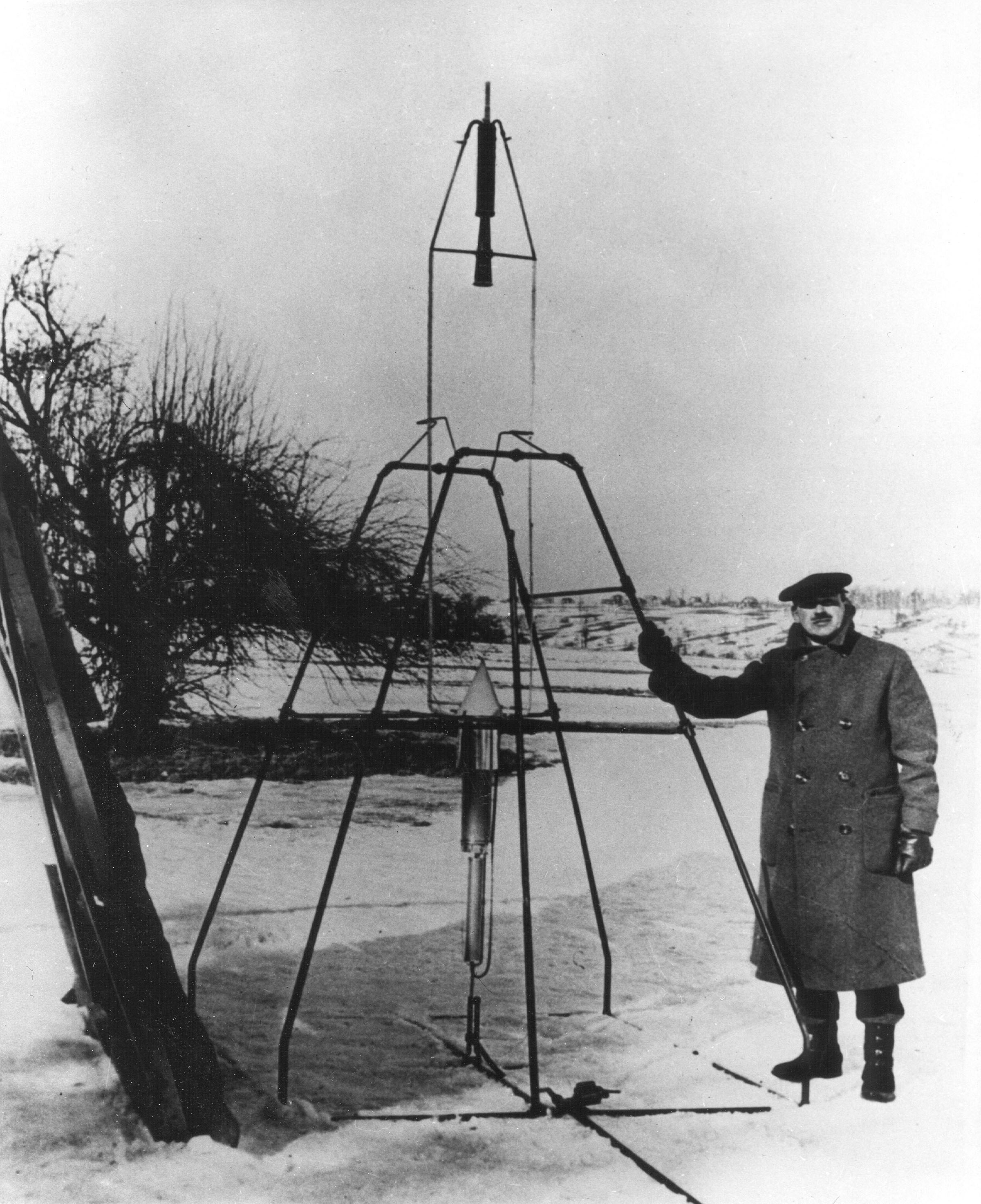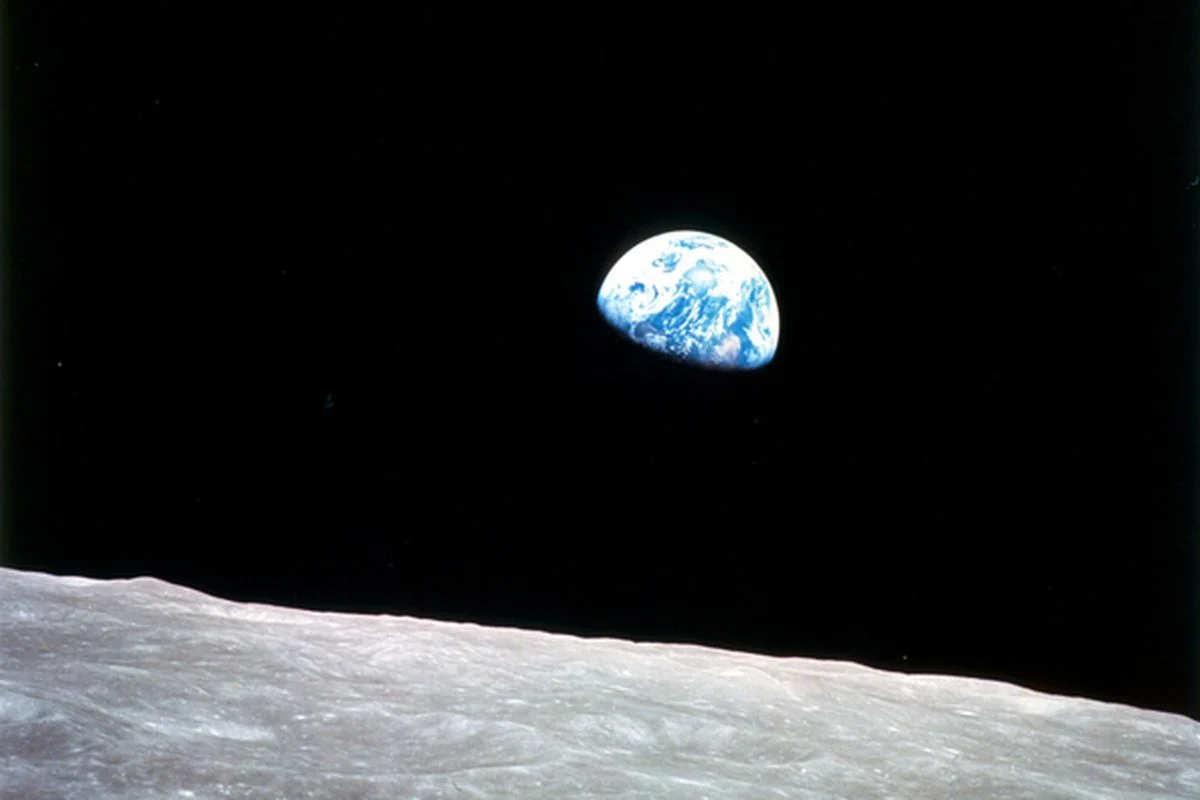The race to go faster, further and higher has intoxicated man since before Icarus took to his wings. In the 20th century, man didn’t just take to the air, but slipped it’s confines for space and a very select few (a total of 24 men) were able to gaze back and see our home in all it’s glory. With The Earth Gazers, Christopher Potter looks how those men that got there and how what they felt was as important as what they saw.
Potter begins his tale about the men who went to space with the tale of the first man to fly the Atlantic solo. Charles Lindbergh may seem like an odd place to start, but his story of drive and determination to achieve was emblematic of America. The way the country embraced flight and worked to push the boundaries was part and parcel of the international figure that Lindbergh was. We forget these days but Lindbergh, upon arriving in Paris, became a cultural superstar. Vetted by politicians, celebrities and everyone in between, Lindbergh happily became the ambassador for flight, and the USA, that his country hoped he would be. He took up endorsements, set up airmail routes and airlines, settled diplomatic issues and, in his orbit, were the great and good of flight. Within this circle was an eccentric rocket man (is there any other kind?) named Robert Goddard. Goddard can arguably be named the father of the liquid fueled rocket. I say arguably because he seems to have been such a pain in the ass that no one was really willing to support him after a while. Yet Lindbergh and Daniel and Harry Guggenheim did. They continued to support his rocket research, going higher and higher, but not as high as a man in Germany.
Robert H. Goddard and liquid-fueled rocket
Wernher von Braun with John F Kennedy
Wernher von Braun was a strange child who loved rockets and became a man who not only powered man to the moon, but created the ballistic missile that has terrorised it ever since. Potter looks dispassionately at von Braun which is the only reasonable way of looking at him. He was complex, conflicted and a genius. What is interesting is that after all the efforts to get von Braun and his team to the states, they didn’t know what to do with him. His missiles and rockets were marginalised and it was only when the Russians took the lead in the Space Race that he moved from and centre. Which was where he wanted to be, for he was nothing but a showman. His Redstone rockets got Alan Shepard and Gus Grissom into sub-orbital flights, but his attention had shifted to the Saturn series of rockets that would soon become, in its fifth iteration, the most powerful machine man has created. Amazingly, amongst all this, he found religion.
Religion and faith is another strand to Potter’s book and one of the more interesting elements. When Russian Cosmonaut Gherman Titov, the second man to orbit the earth, said he’d looked around and couldn’t see God anywhere, this became a gambit between the “God-fearing” West and the “Godless” East. Each returning astronaut and crew was asked if they had seen evidence of the divine. Given their experience, most struggled to articulate their emotions, that sense of wonder they felt in space, looking down on our home. But there was a woman who was determined to ensure they wouldn’t be allowed to even try. Madalyn Murray, the self styled “Most Hated Woman In America” was an atheist communist who had been turned away from her utopia while trying to defect. She turned her passions towards removing God from American life and space, just as Richard Underwood, head of photography at NASA, was giving the astronauts the tools to capture what they saw.
This is the real gem of The Earth Gazers. In taking two iconic photos on the first and last journeys to the Moon, Bill Anders’ Earthrise on Apollo 8 and The Blue Marble by Jack Schmitt on Apollo 17, the astronauts captured something ethereal. That feeling deep down that we live somewhere truly special. Looking at those two photographs also shows us something else. It shows us the thrill and the joy of endeavour. Man always looks just beyond his reach and strives to get there. With The Earth Gazers, Christopher Potter has distilled that feeling and on each page of cataloguing endeavour gives of a hint of the joy those 24 men had when they looked out the window and saw Home.
PS – It needs to be said, in hardback, Head of Zeus have created a truly beautiful edition to go with such an inspiring tale.
The Earth Gazers by Christopher Potter is out now and published by Head of Zeus who kindly provided this review copy.
Earthrise taken by Bill Anders on Apollo 8
The Blue Marble by Jack Schmitt on Apollo 17







Leave a Reply